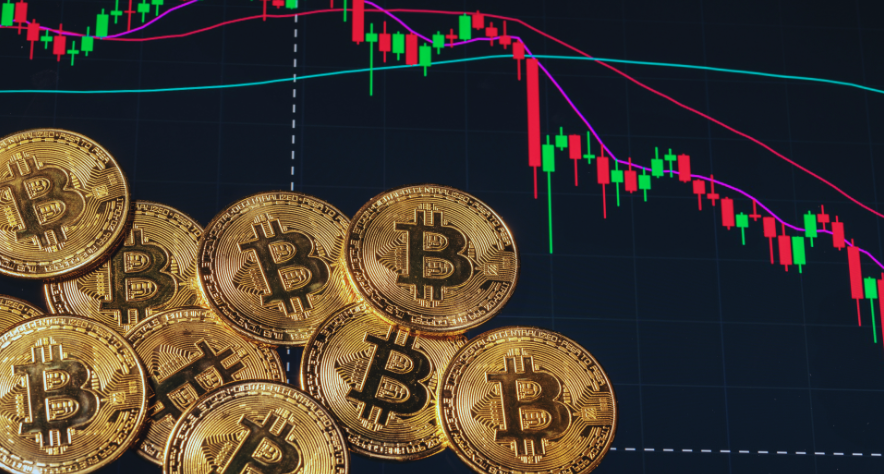Bitcoin Price Market Sentiment Indicator Complete Guide to Reading Crypto Market Signals (2025)

The Bitcoin price market sentiment indicator is crucial for anyone looking to navigate the volatile cryptocurrency landscape successfully. Market sentiment represents the overall attitude of investors toward Bitcoin and the broader crypto market, serving as a powerful predictor of price movements and market trends. This comprehensive guide will explore how sentiment indicators work, why they matter, and how you can leverage them to make informed trading decisions.
The Bitcoin price market sentiment indicator combines various data points, including social media buzz, trading volume, volatility metrics, and investor behaviour patterns, to create a comprehensive view of market psychology. By mastering these indicators, traders and investors can better time their entries and exits, potentially maximising profits while minimising risks in the highly unpredictable crypto market.
Understanding Bitcoin Market Sentiment Fundamentals
Market sentiment in cryptocurrency reflects the collective emotions and attitudes of investors toward Bitcoin and the broader digital asset ecosystem. Unlike traditional markets, crypto sentiment can shift dramatically within hours, making sentiment indicators particularly valuable for Bitcoin traders.
The psychology behind Bitcoin market sentiment stems from several unique factors. First, the cryptocurrency market operates 24/7, creating constant pressure and emotional responses from global investors. Second, Bitcoin’s relatively young market lacks the stability mechanisms found in traditional financial markets, making it more susceptible to sentiment-driven price swings.
Sentiment indicators measure various aspects of market psychology, including fear, greed, uncertainty, and confidence levels. These metrics help traders understand whether the market is oversold or overbought, potentially signalling upcoming price reversals or continuations of current trends.
Social media plays a significant role in shaping Bitcoin sentiment. Platforms like Twitter, Reddit, and Telegram serve as barometers for community mood, with sentiment analysis tools scanning millions of posts to gauge overall market emotions. News events, regulatory announcements, and influential figures statements can dramatically impact sentiment within minutes.
Key Types of Bitcoin Price Market Sentiment Indicators
Fear and Greed Index
The Fear and Greed Index represents one of the most popular Bitcoin price market sentiment indicators available today. This metric combines multiple data sources to create a single score ranging from 0 (extreme fear) to 100 (extreme greed).
The index analyses volatility patterns, market momentum, social media sentiment, surveys, Bitcoin dominance, and Google Trends data. When the index shows extreme fear, it often indicates a potential buying opportunity as prices may have fallen below fair value. Conversely, extreme greed suggests the market might be overheated and due for a correction.
Historical data shows that extreme fear levels often coincide with significant market bottoms, while extreme greed periods frequently precede major price corrections. However, markets can remain in extreme states longer than anticipated, making timing crucial for successful implementation.
Social Media Sentiment Analysis
Social media sentiment analysis examines the tone and volume of cryptocurrency discussions across various platforms. Advanced algorithms process millions of posts, comments, and mentions to determine whether public sentiment is positive, negative, or neutral regarding Bitcoin.
Tools like Santiment, LunarCrush, and The TIE provide real-time social media sentiment scores, tracking metrics such as mention volume, sentiment polarity, and influencer activity. These platforms can identify trending topics, viral content, and shifting public opinion before they significantly impact Bitcoin prices.

Twitter sentiment often proves particularly influential, with tweets from notable figures causing immediate market reactions. Reddit communities like r/Bitcoin and r/CryptoCurrency serve as sentiment barometers, with post engagement and comment sentiment reflecting broader market mood.
On-Chain Sentiment Indicators
On-chain sentiment indicators analyse Bitcoin blockchain data to understand investor behaviour patterns. These metrics examine transaction volumes, wallet activities, holding patterns, and network usage to gauge market sentiment.
Long-term holder behaviour provides valuable sentiment insights. When long-term holders begin selling their Bitcoin, it may indicate decreasing confidence in future price appreciation. Conversely, accumulation by experienced holders often suggests optimistic sentiment about Bitcoin’s long-term prospects.
Exchange inflows and outflows reveal important sentiment signals. Large Bitcoin inflows to exchanges might indicate selling pressure, while significant outflows suggest investors are moving coins to cold storage for long-term holding, reflecting bullish sentiment.
How to Use Bitcoin Price Market Sentiment Indicators Effectively
Timing Market Entries and Exits
Successful utilisation of Bitcoin price market sentiment indicators requires understanding optimal entry and exit timing. Contrarian investing strategies often prove effective, where traders buy during periods of extreme fear and sell during extreme greed phases.
However, sentiment indicators work best when combined with technical analysis and fundamental research. Relying solely on sentiment can lead to premature entries or exits, as markets can remain in extreme sentiment states for extended periods.
Dollar-cost averaging strategies can help mitigate sentiment-driven timing risks. By making regular purchases regardless of sentiment levels, investors reduce the impact of emotional market swings while still benefiting from long-term Bitcoin adoption trends.
Combining Multiple Sentiment Indicators
Using multiple Bitcoin price market sentiment indicators simultaneously provides more robust trading signals than relying on single metrics. Combining fear and greed indices with social media sentiment and on-chain data creates a comprehensive market psychology picture.
Divergences between different sentiment indicators often signal important market turning points. For example, if social media sentiment remains positive while on-chain metrics show distribution, it might indicate smart money is taking profits while retail investors remain optimistic.
Creating custom sentiment dashboards helps traders monitor multiple indicators efficiently. Many platforms offer API access, allowing traders to build personalised sentiment tracking systems tailored to their specific trading strategies and risk tolerance levels.
Risk Management with Sentiment Analysis
Sentiment indicators should complement, not replace, traditional risk management practices. Position sizing, stop-loss orders, and portfolio diversification remain crucial regardless of sentiment readings.
Extreme sentiment readings often coincide with increased market volatility, requiring adjusted position sizes and tighter risk controls. During periods of extreme fear or greed, consider reducing position sizes to account for potentially erratic price movements.
Popular Bitcoin Sentiment Indicator Tools and Platforms
Professional Sentiment Analysis Platforms
Several professional platforms provide comprehensive Bitcoin price market sentiment indicator services. Glassnode offers institutional-grade on-chain analytics with sentiment metrics, while Santiment provides social media sentiment analysis combined with on-chain data.
IntoTheBlock specializes in machine learning-driven sentiment analysis, processing vast amounts of data to identify sentiment patterns and their correlation with price movements. These platforms typically offer both free and premium tiers, with advanced features available for serious traders.
CryptoQuant focuses on on-chain sentiment indicators, providing detailed analysis of miner behavior, exchange flows, and whale activity. Their platform offers real-time alerts when sentiment metrics reach extreme levels, helping traders stay informed of potential market turning points.
Free Sentiment Tracking Resources
Alternative.me provides the popular Fear and Greed Index free of charge, making it accessible to retail traders. The platform updates the index daily and provides historical data for backtesting strategies.
Various Twitter accounts and Telegram channels share sentiment analysis insights, though the quality and accuracy vary significantly. Communities like BitcoinTalk and Reddit often discuss sentiment indicators, providing crowd-sourced analysis and interpretation.
Google Trends offers valuable sentiment insights by tracking Bitcoin-related search volume. Spikes in search activity often correlate with increased market interest and potential price movements.
Case Studies: Sentiment Indicators in Action
The 2021 Bull Market Peak
During Bitcoin’s 2021 bull run, sentiment indicators provided early warning signs of the market top. The Fear and Greed Index reached extreme greed levels above 90 for extended periods, while social media sentiment showed overwhelming euphoria.
On-chain metrics revealed long-term holders beginning to distribute their Bitcoin to exchanges, despite continued positive social media sentiment. This divergence between different sentiment indicators accurately predicted the subsequent market correction.
Traders who recognised these sentiment extremes and reduced their positions avoided significant losses when Bitcoin corrected from its all-time high near $69,000 to below $30,000 within months.
The 2022 Bear Market Bottom
The 2022 bear market provided an excellent example of sentiment indicators identifying potential market bottoms. The Fear and Greed Index remained in extreme fear territory for months, while social media sentiment turned overwhelmingly negative.
However, on-chain metrics showed accumulation by long-term holders and decreased selling pressure from miners. This combination of extreme fear sentiment with underlying accumulation patterns suggested the market was approaching a bottom.
Traders who used sentiment indicators to identify this accumulation phase and gradually built positions during extreme fear periods benefited from the subsequent recovery in 2023.
Advanced Sentiment Analysis Techniques
Machine Learning and AI Integration
Modern Bitcoin price market sentiment indicator systems increasingly incorporate machine learning algorithms to improve accuracy and reduce false signals. These systems analyze vast datasets to identify subtle patterns human analysts might miss.
Natural language processing (NLP) techniques help analyze text-based sentiment data more effectively, understanding context, sarcasm, and nuanced expressions that traditional keyword-based analysis might misinterpret.
Artificial intelligence systems can process multiple data streams simultaneously, identifying correlations between sentiment indicators and price movements that weren’t previously apparent to human researchers.
Sentiment-Based Trading Algorithms
Quantitative trading firms increasingly incorporate sentiment data into their algorithmic trading strategies. These systems can react to sentiment changes within milliseconds, potentially capturing profit opportunities before manual traders can respond.
Retail traders can access simplified versions of sentiment-based trading through platforms offering automated trading bots that incorporate sentiment signals. However, these systems require careful monitoring and regular adjustment to remain effective.
Building custom sentiment-based trading algorithms requires significant technical expertise and backtesting to ensure reliability. Many traders find success combining sentiment signals with traditional technical indicators rather than relying solely on sentiment data.
Common Mistakes When Using Sentiment Indicators
Over-Reliance on Single Metrics
One of the most common mistakes traders make is over-relying on single Bitcoin price market sentiment indicators. While individual metrics provide valuable insights, they shouldn’t be the sole basis for trading decisions.
Markets can remain in extreme sentiment states longer than anticipated, causing premature entries or exits. The famous quote “markets can stay irrational longer than you can stay solvent” applies particularly to sentiment-driven trading strategies.

Successful sentiment-based trading requires patience and discipline. Traders must be prepared to wait for multiple confirming signals before taking significant positions, even when sentiment indicators suggest strong opportunities.
Ignoring Market Context
Sentiment indicators must be interpreted within broader market context. A fear reading during a long-term bull market might indicate a healthy correction, while the same reading during a bear market could signal continued downward pressure.
Macroeconomic factors, regulatory developments, and technological advances all influence how sentiment indicators should be interpreted. Ignoring these contextual factors can lead to misguided trading decisions.
Global events, traditional market performance, and institutional adoption trends all impact Bitcoin sentiment and should be considered when analyzing sentiment indicator readings.
The Future of Bitcoin Sentiment Analysis
Emerging Technologies and Indicators
The Bitcoin price market sentiment indicator landscape continues evolving with new technologies and data sources. Blockchain analytics improvements provide more granular insights into investor behavior patterns.
Decentralized finance (DeFi) activities increasingly influence Bitcoin sentiment, with new metrics tracking cross-chain activities and derivatives markets. These emerging indicators provide additional layers of market psychology analysis.
Virtual and augmented reality platforms may eventually provide new sentiment data sources as cryptocurrency adoption expands into these environments.
Integration with Traditional Finance
As Bitcoin gains mainstream acceptance, traditional financial sentiment indicators increasingly correlate with crypto market sentiment. Stock market volatility, bond yields, and currency fluctuations all influence Bitcoin sentiment.
Institutional adoption brings new sentiment dynamics, with corporate treasury decisions and regulatory developments becoming increasingly important sentiment drivers. These factors require updated analysis frameworks.
The integration of Bitcoin ETFs and other traditional finance products creates new sentiment indicators based on institutional flows and professional investor behavior patterns.
Conclusion
The Bitcoin price market sentiment indicator represents a powerful tool for understanding cryptocurrency market psychology and potential price movements. By combining multiple sentiment sources, maintaining proper risk management, and understanding market context, traders can leverage these indicators to improve their decision-making process.
Success with sentiment-based trading requires patience, discipline, and continuous learning. Markets evolve constantly, and sentiment indicators must be adapted to changing conditions. The key lies in using sentiment analysis as part of a comprehensive trading strategy rather than relying on it exclusively.
As Bitcoin continues maturing and gaining mainstream adoption, sentiment indicators will likely become even more sophisticated and valuable. Traders who master these tools today position themselves advantageously for future market opportunities.
FAQs
Q1. What is the most reliable Bitcoin price market sentiment indicator?
The most reliable approach combines multiple sentiment indicators rather than relying on a single metric. The Fear and Greed Index, social media sentiment, and on-chain metrics together provide a comprehensive view of market psychology. Historical data suggests that extreme readings across multiple indicators offer the most reliable signals.
Q2. How often should I check Bitcoin sentiment indicators?
For long-term investors, checking sentiment indicators weekly or monthly is sufficient. Active traders might monitor sentiment daily, while scalpers may need real-time sentiment updates. The key is maintaining consistency with your chosen timeframe and not over-trading based on short-term sentiment fluctuations.
Q3. Can sentiment indicators predict Bitcoin price movements accurately?
Sentiment indicators don’t predict exact price movements but help identify potential turning points and market extremes. They work best when combined with technical analysis and fundamental research. While not foolproof, sentiment indicators have historically provided valuable insights into market psychology and potential reversal points.
Q4. Are free sentiment indicators as good as paid ones?
Free sentiment indicators like the Fear and Greed Index provide valuable insights, but paid platforms typically offer more comprehensive data, faster updates, and additional features. For casual investors, free tools may suffice, while serious traders often benefit from premium platforms’ advanced analytics and real-time alerts.
Q5. How do global events affect Bitcoin sentiment indicators?
Global events significantly impact Bitcoin sentiment, often causing rapid shifts in market psychology. Regulatory announcements, economic crises, and geopolitical tensions can override technical sentiment signals. Successful traders monitor global news alongside sentiment indicators to understand the broader context driving market emotions.
